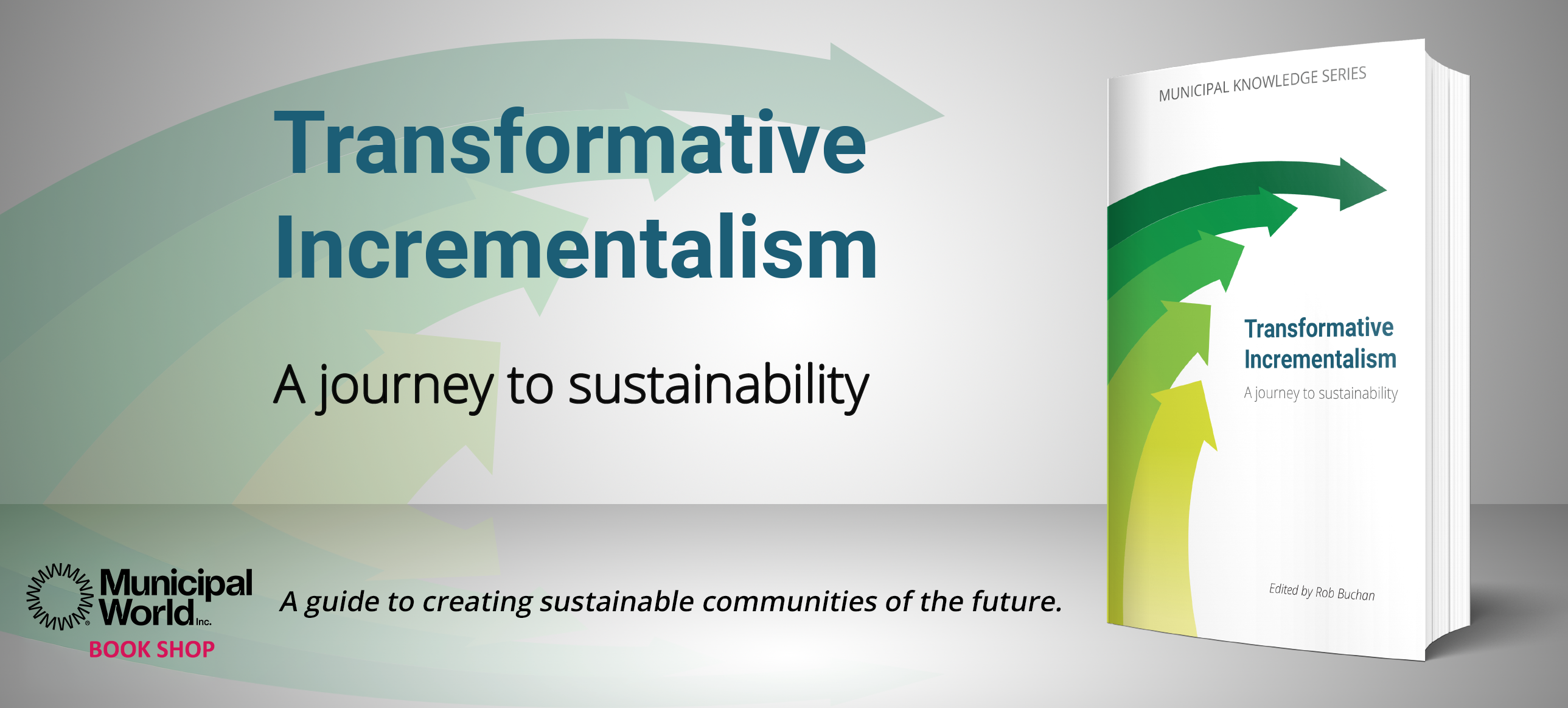Local government, interrupted: Tackling the key issues of disruption

Local government always faces a certain degree of disruption. This is no more true than this year: a municipal election that changed faces and directions on council in many municipalities; a provincial election and decisions that threw elections into chaos in Canada’s largest municipality; a major federal policy change on cannabis that has left all orders of government scrambling to varying degrees; and the constant battle of finding ways of doing more with inconsistent and inadequate revenue sources.
With that as a backdrop, alumni from Western’s local government program met in London, Ontario at the annual local government alumni society conference to discuss some key issues. Representing staff from multiple orders of government, as well as the private sector, it was a great opportunity to come together and share knowledge on a diverse range of topics.
The Great Innovation Debate
The day started with an opening panel on innovation that asked the big question: What are the roles of politicians, administration, academia, and the private sector in fostering innovation in the public service? Moderated by Professor Zachary Taylor, panelists included Amandon Stratton, Carol-Lynn Chambers, Jason Reynar, and Josh Morgan.
There was a diversity of opinions on a variety of subjects – even on what constitutes innovation. Does innovation have to be big, or can it be a series of smaller initiatives that make life better? Is it about “best practices” or “next practices”? There’s no concrete answer either way, but it was an interesting topic of debate.
A second topic on which there wasn’t any particular consensus but included an interesting idea is whether innovation is something that should be engrained within the DNA of everyone in the organization, or whether there are benefits to spinning off into an innovation department. One of the most poignant arguments for the former is that, by spinning it off, you can create a “not my job” mentality among certain members of the team. However, the idea that it allows the organization to try things quickly – whether successful or not – is an interesting debate. One of the more interesting suggestions by Josh Morgan was something of a hybrid approach: small changes can be institutionalized to get everyone thinking about innovation; however, high-risk and high-impact projects should be isolated.
One of the other key topics of discussion included the role of fostering a culture of innovation, which means not only creating a barrier-free culture and encouraging people to come up with – and develop – new ideas and ways to make citizens’ lives better, but also sometimes providing the cover – politically or otherwise – for some of the ideas to be tested and implemented. The discussion turned to London’s use of ranked ballots in the election – it was a challenge; but, by and large, the whole thing was successful.
An interesting discussion point: using a bus analogy to describe early adopters, late adopters, and laggards, Carol-Lynn Chambers discussed some of the best ways to bring about innovative change in an organization. Basically, the idea is that the early adopters are generally more respected than the innovators – they saw the idea, and chose to get involved with the project. They have a bit of credibility, and are great champions for the cause. So, with that in mind, it should be important to choose who you want to get onto the project early – it can provide the necessary cache and momentum to get the project off the ground.
And, what of the private sector’s role in fostering innovation in the public sphere? Consultants do provide some benefits – they often have skills that others in the organization lack (particularly in smaller communities) and they are able to do things because they are reasonably detached from the situation. However, it’s something that should be considered carefully.
Ranked Ballots – The London Experience
London was the first municipality in Canada to adopt ranked ballots for a local election. No matter the result of the election – or the process – the city is a test case for all communities that are looking to using ranked ballots in the future. Taking advantage of this, two city staff members, Clerk Cathy Saunders and Manager of Licensing and Elections Sarah Corman, gave a presentation on the city’s experiences and key takeaways from the election.
The city faced some unique challenges while developing the voting method. Basically, the technology wasn’t available in Canada – none of the suppliers had developed the technology or the tabulators for a ranked ballot election – and there was no response to the initial RFP on the subject. After a significant amount of behind-the-scenes work, the city was able to partner with a supplier for a solution. However, there was no certification from the province that would provide assurance that the model was sound. So, another unique workaround had to be developed.
This challenge was solved by looking south – they studied some of the ranked ballot elections held by communities in the United States (particularly Minneapolis) and were able to connect with American auditors who helped to review some of the key processes and procedures, evaluated the software and hardware, and helped to do some of the testing.
Another unique challenge came as voting day approached: the ballots were going to be completely different for electors. Key issues included: making sure that everyone was given the opportunity to vote, given that it would take longer to fill out a ballot; ensuring what could and couldn’t be said by poll workers about filling out the ballot; and the fact that it was a composite ballot including some ranked and non-ranked choices. Some of the solutions were obvious. The city opened more polling stations and had more poll workers available, which would help to reduce lines. And, members of the election staff were often chosen to be poll supervisors wherever possible and worked many of the advance polls, so there was a high degree of knowledge at the sites and staff were able to take some of the learnings from early polls and apply it on election day.
Communication was an important part of the London experience – the city had been communicating with residents from before the decision was made; and, once ranked ballots were adopted, it meant communicating with not only voters, but also candidates, media, and community organizations. Elections staff solved this by being proactive: they had a communications specialist involved for the entire year; elections staff held over 160 events; there were media training sessions as well as a blitz to try and speak to various media outlets about the election; and multiple candidates meetings were held before nominations to educate people before they made a decision to run. It was likely one of the more important elements to ensuring the process ran smoothly. Communication was important: after review, it was found that most people were at least generally aware of the ranked ballot choice for the election, and the media coverage had generally been positive.
The final challenge was results reporting. Because it was new, there was no automatic reporting to the city website – everything had to be done manually. To get the results to the website, staff had to transcribe and upload data from over 200 tabulators by hand. But, it was done successfully – initial winners and school boards were determined before the end of the night, and the entire vote counting process was completed and displayed within 24 hours.
One of the criticisms of ranked ballot elections was that there was no proven model. The presenters’ response was: “well, now there is.” By and large, the process ran smoothly, and there is hope that other communities now have a made-in-Canada model that they can adopt for successfully conducting ranked ballot elections in their municipalities.
Cannabis – What’s Happening and What’s to Come
Cannabis has been legal in Canada for about a month – and, while there’s still a lot to learn and figure out, it is a great opportunity to reflect on what’s happened and what our leaders think we can expect in the weeks, months, and years to come. Moderated by professor Bill Irwin, panelists included Joe Couto, Linda Stobo, Jason Schmidt-Shoukri, Gus Michaels, and Shayne Turner. Their panel touched on a wide array of topics, some of which are mentioned below.
The panel opened with the issue of communication. Universally, there were positive things to say about how communication was handled before the election. After the election, there was a belief that things changed rapidly and that they were a little more chaotic; that there were some instances where things were rushed; and that municipal leaders felt as though they weren’t communicated with to the same degree.
One of the major topics of discussion was how to manage some of the elements that would be traditionally by-law enforcement, what would be police responsibility, what would be the responsibility of other orders of government, and how that was going to play out. A common theme throughout the discussions was about public interest. What makes the most sense and what will do the most good with the limited resources available. Turner was the most blunt: cannabis is now a sin product like tobacco or alcohol; we don’t count cigarette butts or beer bottles that people have; and, if municipalities can’t do it effectively, should they even do it at all? Again, it’s still a subject with more questions than answers; but, there is a lot of interesting debate.
Stobo had an interesting point about the decision that municipalities face when choosing if they should allow brick and mortar retailers: if all municipalities opt out, are they really fulfilling policy objectives? All it is likely to do is help to facilitate the illegal market. There’s generally support for this; but, a strong amount of NIMBYism. Tied to that, Michaels made a point about the fact that municipalities have tried “opting out” and fighting against things that are generally supported (e.g., ride sharing, short-term rentals, etc.), with limited success. Is it going to be another fruitless endeavour? And, perception is a very difficult thing to manage – if you opt out, is your community going to be seen as regressive and make it harder to attract youth and investment?
Also, money is always something that municipalities and organizations are going to struggle with – none of the speakers believed that even the promised funding by the government would be sufficient to meet needs. Public health is going to see increased responsibilities with little increase in funding; police are going to see costs rise, which means more dollars unless you’re welling to cut hours on the force; by-law enforcement will face challenges; there will be new training requirements … and funding just hasn’t been sufficient to cover any of those.
Diversity and Inclusion
The day’s keynote speaker was Jesse Wente, Indigenous speaker and media personality, who came in to discuss issues of diversity and inclusion – and just how important those issues are to local government.
Wente opened with the idea that diversity is like a forest – there are many different types of trees, plants, etc. … and the forest is at its healthiest when there is diversity. Diversity is what he called a “natural order,” and any lack of diversity is a choice that we have made. So, what does that mean for municipalities and municipal government? Local government has often been the least diverse group – predominantly male, predominantly white, and predominantly older. It has been this way for so long that people are starting to turn away. One of the more poignant ideas is that, if you’ve been outside your whole life, how do you know you’re going to be welcomed and represented? How is the community going to see itself reflected in government? Why are they going to participate? Over years and generations, that means eroding democracy – lower voter turnout, less engagement, and incumbent advantage.
So, it’s a challenge – how do we get people into the room? If a group has been marginalized for years, even decades, what incentive exists for them to engage? On the Indigenous front, policy has pushed citizens to the margins, trying to make them invisible. What is needed is new stories – and that means new storytellers. Wente drew heavily on his media experience to explain this disconnect; but, the lessons are key for government as well. It means working to foster and develop new leaders, and Wente suggested that term limits, even if something is working, is valuable in ensuring that fresh blood and new visions are continually making their way into the community.
Further, today’s society is somewhat challenged – our politics are nationalized to the point where we’re engaged in culture wars; our local media coverage of the communities where we live is eroding; and the nature of media is shifting so that sometimes there isn’t even an “objective reality” anymore. And, that challenge is likely to get worse as more and more people move online to get news.
What’s the solution? The solution ultimately comes down to relationships. Wente argues that we’ve put more stock in developing digital relationships than real ones. It means moving beyond social media and out into the community. The goal is not to hire one or two token staff and call it diversity, it’s about changing the story at the leadership level by changing the storytellers. It’s about increasing diversity not only on council, but also at the highest levels of administration. And, that only works when it’s real. As Wente suggested, right now it’s a lot of “everyone’s showed up to the test, but no one’s done the homework” – and he argues we need to get better at building this relationship. Drawing back to the First Nations issue, Wente argues that they “don’t need allies, they need accomplices.” It’s less about thought, more about action. It’s about learning – and again, that goes back to bringing different storytellers to the table.
The closing idea returns to where the presentation opened. Our communities should be like forests – diverse, able to withstand challenging climates, fostering growth – but, for that to happen, council and leadership needs to be a forest as well. MW
James Wilson is Director, Data and Logistics for Municipal World.
Related resource materials:



